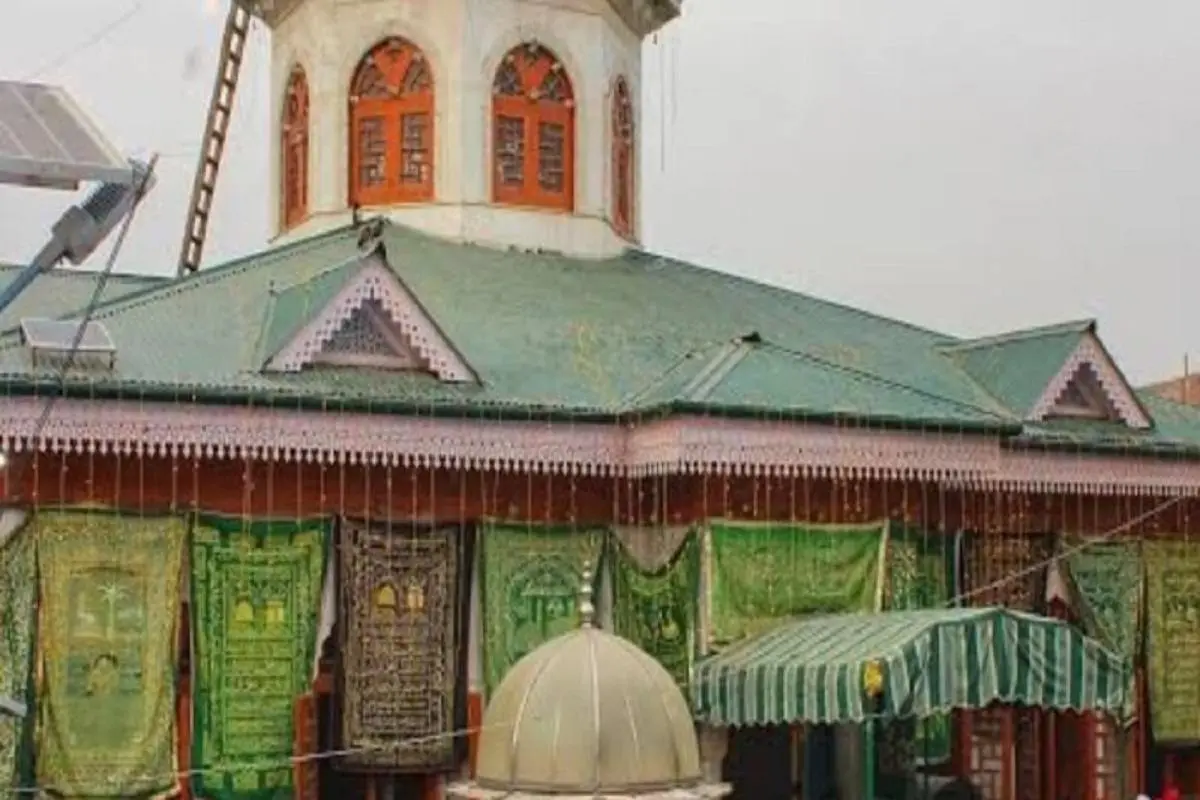
The aforementioned couplet is best suited to the life story of Hazrat Sheikh Mohammad Sharif –Ud-Din popularly known as Shoakh- Bab Soub (RA). According to various historical notes, this Sufi saint was born in a well-off family in the Saffron town of Pampore. He was a socially conscious and religiously devoted personality.
Everything was going smoothly in his life but the abrupt changes in his behavior not only surprised his family but the entire locality as well. He dissociated himself from worldly affairs and led an isolated life. His deep thoughts and growing anxiety developed peculiar feelings in him. He used to make rounds across the town day and night. When his outward action became more and more complex with each passing day worried his family members, they took him to the company of Khawaja Masood Pampori (RA) for special prayer so that his condition would be stable. Ordinary eyes could not recognize his condition prevailed upon him but Khawaja Sahab at first sight realized his status “Haal”. He instructed his men to keep him in a locked room. As long as he remained there, Khawaja Sahab was pouring spiritual blessings upon him. He refined his character and his inner and outward conditions alleviated; his anxiety faded away. He once again clipped himself with Shariah.
Later, his dedication, sincerity, patience, and his supererogatory prayer (Zikr-o-Azkaar) brought him very close to Khawaja Sahab. He became his dearest disciple. The growing intimacy developed an everlasting spiritual bond between them. Just a few days before his physical departure from the transit world. His Murshid nominated him as Chief Khalifa. He entrusted all his disciples to him for future guidance. And like a true disciple, he followed the instructions of his Murshid strictly and carried forward his sacred mission with zeal and zest till his last breath. Whenever anyone uttered the name of his Murshid before him, he got deeply emotional, and his eyes welled with tears.
One day, Hazrat was busy whirling and chanting Kashmiri elegy, recalling his mentor. One of his companions posed him a question, “Kya Silsila Kubrawiya Is Amal Ki Tasdeeq Kartaa?” (Does Sisila Kubriya endorse such an act?) He replied, “Istarah Main Apna Murshid Ko Ba-Shoakhan Yaad Karta Hun” (I perform this act just to express my grief over the death of my beloved Murshid). Since then, he got his popularity as Shoakh Bab Soub.
It is mentioned in the various historical documents that he and his colleagues including Baba Ali Sahib (RA), Baba Mohammad Sadiq (RA), Khawaja Habibullah Attar (RA), Sheikh Najam-Ud- Din Rehshi (RA), and locals played a vital role in the establishment of Khanqah Masoodiya at Numblibal Pampore. It was built in the 16th century on the eastern side of the river Jhelum on the Srinagar-Jammu National Highway. The purpose of this grand work was to reach out to the people and enlighten them with the basic teachings of Islam.
Shokh Bab Soub (RA) followed the instructions of his Murshid and retained the spiritual torch of Sisila-Kubrawiya flourishing. He dedicated his whole life to the service of mankind. Whatever gifts they received there, they used to distribute them to needy people. This particular structure proved a learning center for knowledge seekers. It became the information hub where messages were circulating to the general public. This grand structure still exists there with the ground floor comprising a double-story hall. The construction follows the traditional pattern of wooden cribbage construction associated with the Muslim religious architecture of Kashmir.
While constructing the Khanqaha, one of his comrades Bangir Rishi (RA), another Sufi of the same order, saw a dream in which he saw the face of Shoakh Bab Soub illuminating like the sun. When he shared the same with him, he said, “Your dream is the endorsement of this grand work” Mr. Randolph Landenberg, an American expert on architectural heritage who had done an appreciable amount of work on mapping Kashmir’s architectural heritage mentioned “Khanqah-i-Khawaja Masood Pampori” in his writings that gives it global recognition. Noted historians like Hassan Shah Khuiehama and Mohammad Azim Dedmari included his name in the category of Mujzoob Awliya keeping his earlier stage of life in view.

















